Updated: 09-Jan-2020
Argus was established in 1900 to manufacture automotive components.
-In 1906 they began with aircraft engines in Berlin when one of their engines was installed on the airship "Ville de Paris". It was the "Argus CV 40/50" engine.
-Actually it was a converted Argus marine engine.
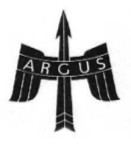
"Logo Argus"
-In 1910 they enter in full aviation when they first built 40/50 CV four-cylinder engines.
-From this moment they entered in plain competition with the existing Mercedes and Benz engines.

"Argus 40/50 CV"
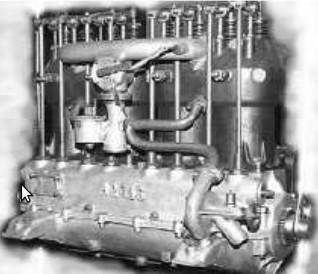
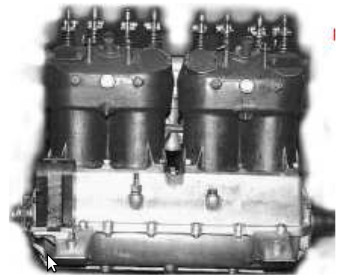
“Two more views of the Argus 40/50 CV”
-Following their own style derived from their previous activity, the cylinders were mounted in pairs in a casting block.
-We note that there are two distinct periods in Argus, the pre- and WWI period and the pre- and WWII period. And within each of them there are two stages:
-During WWI and before, the engines were known as Type I, II, etc. and later by their power, 120 CV, 135 CV, 180 CV, etc.
-During WWII and before, they became known as "As" and the second period would be the one of the ramjets for the V-1 and other applications.

"Argus diagram"


“Argus Tipo I, 70 CV”
-Before the first war, in 1913, there was the famous installation of four 4-cylinder 100 CV Argus engines on the Sikorsky "Bolshoi" biplane aka Le Grand.
-These engines were also used by the Fokker Spin, Hannover CLIII, etc.
-Type I (Typ 1) was a four-cylinder engine that gave 70 CV at 1250 rpm. It followed the style of the previous Argus engines. The type II (Typ 2) also had four cylinders but gave 100 CV.

"Argus Tipo II, 100 CV"
-Type III was a 6-cylinder engine with the same cylinder dimensions as Type I. It gave 110 CV at 1300 rpm. (1916).
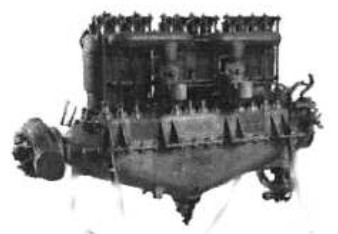
"Argus Tipo III (typ 3), 110 CV"
-Type IV was a four-cylinder again but giving 140/150 CV according to the maximum rate that was assigned to the aircraft type in which the engine had to be installed.
-We observe that the twin cylinder blocks are still used in this engine range.
-All these engines are water cooled.

"Argus Type IV (Typ 4), 140/150 CV"
-During pre-WII, the Argus engines were named as "Typ" instead of being known by their power. Later after the war they were called "As".
-This four-cylinder, upright engine from the years 1911 to 1912 gave 100 CV at 1250 rpm. This engine weighed 170 kg. Therefore the power to weight ratio was nearly twice the ratio of the engines after WWI.

"Argus Type IV (Typ 4)"
-Type V (Typ 5) was a six-cylinder upright inline engine with a displacement of 788 cu. in. and gave 140 CV. Its cylinders were similar to the Type II engine.
-Type VI (Typ 6), with six cylinders of the same size as the Type IV ones gave 210 CV at 1,50 rpm. It had 1,140 cu. in. of displacement.
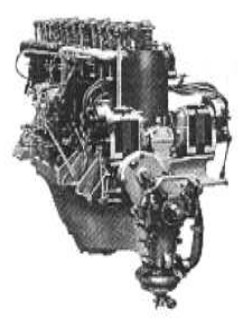
"Argus Type VII (Typ 7)"
-Type VII was a six-cylinder engine with less displacement than Type VI, only 632 cu. in. The power was 115 CV or 130 CV at 1,350 rpm.
-They had Claudel duplex carburetors and Bosch magnetos.
-Type VIII, had a design feature, which previous engines did not have, the aluminum oil sump casting had four feet that facilitated their placement on the floor when it was mounted or removed from the plane.
-Like this, the water pump, which was located at the lowest point of the engine, was protected.
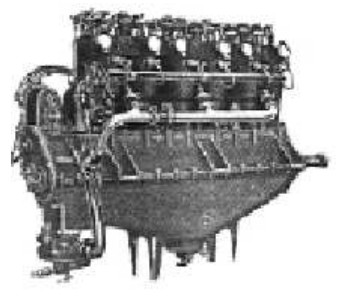
"Argus Type VIII (Typ 8)"

"Another view of the Type VIII (Typ 8)"
-The Argus engines were also known just by their power, so we see some of them without mentioning the Type, perhaps because they did not have a Type number. There were the 120 CV and the 180 CV.
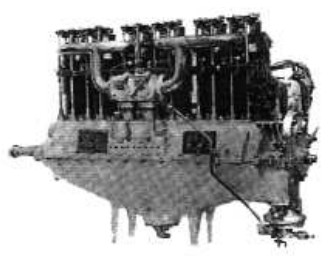
"Argus 120 CV"
-The Argus 120 engine could be confused with Type III for being in its power range, but we observe constructive differences, especially the four legs, but also that it is using a Duplex carburetor instead of two singles.
-The same applies to the 180 CV. But unlike the previous case it has no integral legs.

"Argus 180 CV"
-During the war the Argus 180 CV engines were also made by Opel.
-At the end of the war when the country was sanctioned by the Treaty of Versailles that prevented them from building airplanes, they returned to building cars and engines.
-En 1919 the company had been acquired by Horch Automobile.
-It was not until around 1926 that they began designing engines again and they began the production of V-engine prototypes, of which we show some below.
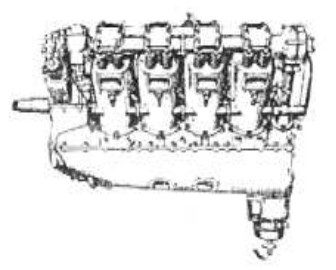
"Argus, años 1920’s"
-Here we see another technique, that of individual cylinders and in V. Also the use of propeller reduction gear.
-In 1929 new engines are produced with new specifications and denominations, like the Argus As-6 (sometimes written as As-VI) where we clearly see the 12-cylinder upright V.
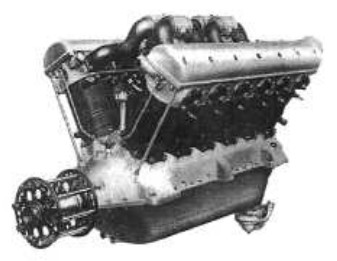
"Argus As-6"
-There was a version with inverted cylinders of this engine, the As-6a that gave 700 CV and is shown below.
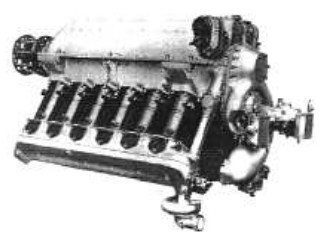
"Argus As-6a"
-Both did not come any further than prototypes. With this latter model, we see the first test of engines with inverted cylinders that would dominate the brand's production until the end of WWII.
-The tendency to use inverted engines in Germany was also reflected in Daimler-Benz and Junkers.
-The advantages may be that the propeller is higher and the pilot's forward visibility is better. A point against this, is that in various circumstances oil can pass to the cylinders and produce a "hydraulic lock", which means that the cylinder has its mechanical valves closed, and this will cause mechanical damage when trying to rotate the motor with the starter.
-The precautions are: turning by hand at least two full turns to know that this situation will not occur, or remove spark plug and drain the cylinders. (when there is oil in the cylinders).

“New image of thel Argus As-6a”
-The project As-5 is surprising, as it seems it was a 24-cylinder radial engine but with groups of them inline.
-From the As-7 we only know its existence and power, 225 CV.
-The well-known AS-8 engine, which they started to manufacture in 1928/9, was an inverted inline four-cylinder that gave 95 CV to 150 CV depending on the version. They were a great success. These engines were air cooled so this was a great change of the brand's philosophy.
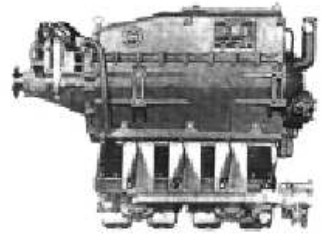
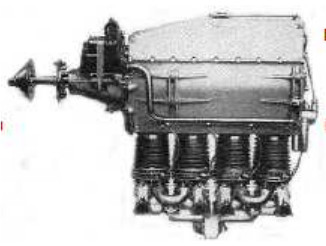
“Argus As-8, two views”
-There are three As-8 versions:
-The As-8 A gave 80 CV at 1,650 rpm and 95 CV at 1,750 rpm. (1929)
-The As 8 B gave 115 CV continuous, 130 CV max. (1929)
-The As 8 R is a more powerful version of the As 8B. This engine was used in sports planes and particularly for competition. They gave 150 CV.
-This engine was installed in the Heinkel He64, the Klem KL32 and the Messerschmidt M29 among others.
-They started to build this engine in 1930.
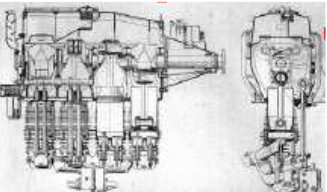
"AS-8 diagram"
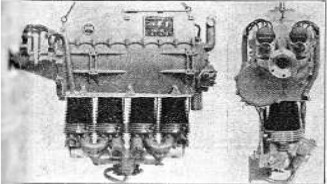
"Argus As-8 side and front view"
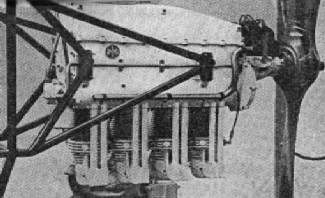
"As-8 installation"
-Now we come to the engine that has given us a better brand image, the As-10.
-The As-10 is an eight-cylinder, inverted-V, air-cooled engine. From 1931 until 1945, they manufactured more than 28,000 units. The As-10c version may have had its most famous installations in the Fieseler Storch (Stork) and the Me-108 Taifun. These engines were also made in France during WWII. They gave 175 Kw. at 2,000 rpm.
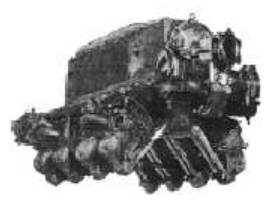
"Argus As-10"
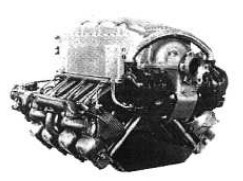
"Argus As-10c"

"Argus As-10C-3"
-The Argus As-12 was a 16-cylinder H engine that gave 550 CV.
-The Argus As-16 was a 4-cylinder engine, perhaps destined to sports aviation with only 35/40 CV according to the aircraft.
-The Argus As-16 was a horizontal-opposed 4-cylinder engine, as we can see in the picture below. This engine gave 35 CV at 2,400 rpm.
-It had L-type combustion chambers.
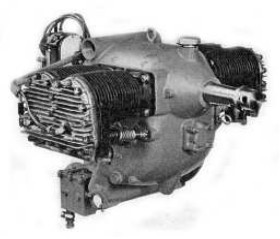
“Argus As-16”
-The As-17a has 6 inverted inline cylinders. It gave 225 CV at 2,400 rpm. It is the big brother of the As-8 four-cylinder. The As-17a engine was used by the Fieseler Fi 97 among others.

"Argus As-17a"
-Below a picture of the As-17 that we obtained recently.
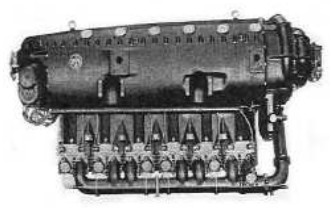
"Argus As-17"
-The 401 series is nothing more than the 10 series we have seen before. They were renamed when the German Ministry applied number 4 to the factory.
-We do not have any details from the As-402.
-The Argus 403 series were projects to build radial engines with two stage superchargers giving 3,000 CV at 32,000 feet.
-There were the -P5 y -P9 sub-models.
-Around 1937 they started a new line of refined engines with electron blocks, thin casings and aluminum cylinder heads.
-They were the As-410s with 12 cylinders, inverted V with an angle of 60° between cylinders. With reduction gear and supercharger they gave in the range from 465 to 485 CV at 3,100 rpm, with a weight of 315 Kgs.
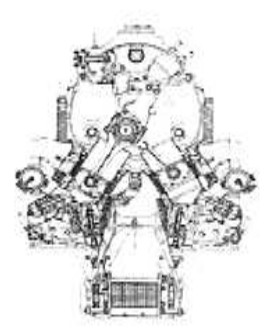
"As-410 diagram"
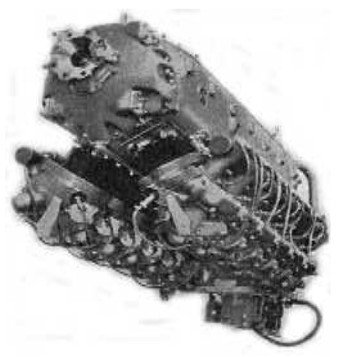
"As-410"
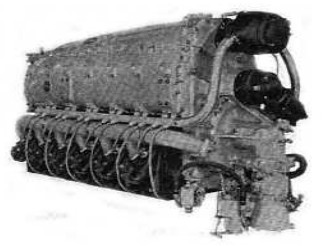
“Two views of the As-410”
END OF FIRST PART
Engines of ARGUS 1st part
Model: 120 CV
Arquitecture: In-line
Cooling:
Total Displacement:
Bore / Stroke:
Power: 120 CV @ rpm
Weight:
The Argus 120 could be confused with Type III for being in its power range, but we observe constructive differences, especially the four legs, but also that it is using a Duplex carburetor instead of two singles.

"Argus 120 CV"
Model: 180 CV
Arquitecture: 6-cylinder In-line
Cooling:
Total Displacement:
Bore / Stroke:
Power: 180 CV @ rpm
Weight:
The Argus 180 had a Duplex carburetor.

"Argus 180 CV"
Model: Argus 4-cyl. in line, 40/50 CV
Arquitecture: 4-cylinder In-line
Cooling:
Total Displacement:
Bore / Stroke:
Power: 40 / 50 CV @ rpm
Weight:

"Argus 40/50 CV"
Model: As-014 (109-014)
Arquitecture: Pulse jet
Chambers:
Fuels: Petrol
Feed System:
Ignition:
Thrust: 660 Lbf
Weight:
The Type 109-014 was the pulsejet that powered the V-1 flying bomb.

"Argus 109-014"
Model: As-044 (109-044)
Arquitecture: Pulse jet
Chambers:
Fuels:
Feed System:
Ignition:
Thrust:
Weight:
An engine that was similar to the Argus 109-014, but with a square intake at the front.
Model: As-10C
Arquitecture: 8-cylinder Inverted V-engine
Cooling: Air
Total Displacement: 12.67 Ltr.
Bore / Stroke: 120 x 140 mm
Power: 240 CV @ 2000 rpm
Weight:
The As-10 had the inverted-V at 90°. From 1931 until 1945, they manufactured more than 28,000 units. These engines were also made in France during WWII.
There was an As 10C-1 variant

"Argus As-10c at Vigna di Valle historic museum"
Model: As-10E
Arquitecture: 8-cylinder Inverted V-engine
Cooling: Air
Total Displacement: 12.67 Ltr.
Bore / Stroke: 120 x 140 mm
Power: 270 CV @ 2100 rpm
Weight: 232 Kg
Optional-output version of the As 10C.
There was an As 10E-2 variant, which was proposed for the Pilatus P-1 project.
Model: As-12
Arquitecture: 16-cylinder H-Engine
Cooling:
Total Displacement:
Bore / Stroke:
Power: 550 CV @ rpm
Weight:
Model: As-16
Arquitecture: 4-cylinder Horizontally opposed
Cooling:
Total Displacement:
Bore / Stroke:
Power: 35 CV @ 2400 rpm
Weight:
It had L-type combustion chambers.

"Argus As-16"
Model: As-401
Arquitecture: 8-cylinder In line inverted
Cooling: Air
Total Displacement: 12.67 Ltr.
Bore / Stroke: 120 x 140 mm
Power: @ rpm
Weight:
The 401 series is the same as the As 10 series. They were renamed as the German Ministry applied number 4 to the factory.
The As 401 was supercharged.
Model: As-402
Arquitecture:
Cooling:
Total Displacement:
Bore / Stroke:
Power: @ rpm
Weight:
We do not have any details from the As-402.
Model: As-403
Arquitecture: Radial
Cooling:
Total Displacement:
Bore / Stroke:
Power: @ rpm
Weight:
The Argus 403 series were projects to build radial engines with two stage superchargers giving 3000 CV at 32,000 feet. There were the -P5 y -P9 sub-models. This engine was not built.
Model: As-410
Arquitecture: 12-cylinder In line inverted
Cooling:
Total Displacement:
Bore / Stroke:
Power: 485 @ 3100 rpm
Weight: 315 Kg
The As-410s had the inverted V with an angle of 60o. It had reduction gear and supercharger.

"As-410"
Model: As-411
Arquitecture: 12-cylinder Inverted V-engine
Cooling:
Total Displacement:
Bore / Stroke:
Power: 600 CV @ 3300 rpm
Weight:
The 411-A1 version, similar to the As-410, had a reduction gear at a different ratio, and gave more power for its higher rpm.
The As-411s were built under license by Renault during the war, and they continued building them after the war.

"Argus As-411"
Model: As-412
Arquitecture: 24-cylinder H-Engine
Cooling: Liquid
Total Displacement:
Bore / Stroke:
Power: @ rpm
Weight:
The As-412 was a prototype designed in cooperation with Junkers.
They had contra-rotating propellers. They did not pass the projecting stage.
Model: As-413
Arquitecture: 24-cylinder H-Engine
Cooling:
Total Displacement:
Bore / Stroke:
Power: @ rpm
Weight:
Just like the As-412, the As-413 was designed in cooperation with Junkers, but no engine was built.
-They were water-cooled, 24-cylinders H-engines with contra-rotating propellers. They did not pass the projecting stage.
Model: As-5
Arquitecture: 24-cylinder W-engine
Cooling: Liquid
Total Displacement: 94.1 Ltr.
Bore / Stroke: 160 x 195 mm
Power: 1500 CV @ 1800 rpm
Weight: 1100 Kg
It conists of two W-engines linked through the same crankshaft. one engine above the crankshaft and the other one inverted below it.

"Argus As-5 engine"
Model: As-6
Arquitecture: 12-cylinder V-Engine
Cooling:
Total Displacement:
Bore / Stroke:
Power: @ rpm
Weight:
The Argus As-6 (sometimes written as As-VI).
It did not come any further than a prototype.

"Argus As-6"
Model: As-6a
Arquitecture: 12-cylinder Inverted V-engine
Cooling:
Total Displacement:
Bore / Stroke:
Power: 700 CV @ rpm
Weight:
An inverted cylinder version of the As-6, and neither it did not come any further than a prototype.

"Argus As-6a"
Model: As-7
Arquitecture: 9-cylinder Radial
Cooling:
Total Displacement:
Bore / Stroke:
Power: 800 CV @ 1850 rpm
Weight:
From 1927.

"As-7 (Photo E. Vseteka)"
Model: As-8A
Arquitecture: 4-cylinder In line inverted
Cooling: Air
Total Displacement:
Bore / Stroke:
Power: 80 / 95 CV @ 1650 / 1750 rpm
Weight:
The As-8A, has been built as from 1929.

"Argus As8 left side without deflectors"
Model: As-8B
Arquitecture: 4-cylinder In line inverted
Cooling: Air
Total Displacement: 6.3 Ltr.
Bore / Stroke: 120 x 140 mm
Power: 115 / 130 CV @ 2200 rpm
Weight: 116 Kg
The As-8B, has been built from 1929.
Model: As-8R
Arquitecture: 4-cylinder In line inverted
Cooling: Air
Total Displacement:
Bore / Stroke:
Power: 150 CV @ 2350 rpm
Weight:
The As 8 R is a more powerful version of the As 8B. This engine was used in sports planes and particularly for competition.
This engine was installed in the Heinkel He64, the Klem KL32 and the Messerschmidt M29 among others, and were built as from 1930.
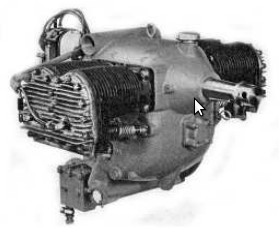
"Argus AS8R"
Model: As17a
Arquitecture: 6-cylinder In line inverted
Cooling:
Total Displacement:
Bore / Stroke:
Power: 225 CV @ 2400 rpm
Weight:
It is the big brother of the As-8 four-cylinder. The As-17a engine was used by the Fieseler Fi 97 among others.

"Argus As-17"
Model: Typ 1
Arquitecture: 4-cylinder In-line
Cooling:
Total Displacement:
Bore / Stroke:
Power: 70 CV @ 1250 rpm
Weight:

"Argus Typ 1 70 CV"
Model: Typ 2
Arquitecture: 4-cylinder In-line
Cooling:
Total Displacement:
Bore / Stroke:
Power: 100 CV @ rpm
Weight:

"Argus Typ2, 100 CV"
Model: Typ 3
Arquitecture: 6-cylinder In-line
Cooling:
Total Displacement:
Bore / Stroke:
Power: 110 CV @ 1300 rpm
Weight:
The Type III was a 6-cylinder engine with the same cylinder dimensions as Type I. (1916).

"Argus Typ 3, 110 CV"
Model: Typ 4
Arquitecture: 4-cylinder In-line
Cooling: Liquid
Total Displacement:
Bore / Stroke:
Power: 140 / 150 CV @ rpm
Weight:

"Argus Typ 4"
Model: Typ 5
Arquitecture: 6-cylinder In-line
Cooling: Liquid
Total Displacement: 788 cu. in.
Bore / Stroke:
Power: 140 CV @ rpm
Weight:
Its cylinders were similar to the Type II engine.
Model: Typ 6
Arquitecture: 6-cylinder In-line
Cooling:
Total Displacement: 1140 cu. in.
Bore / Stroke:
Power: 210 CV @ 1250 rpm
Weight:
Type VI (Typ 6), with six cylinders of the same size as the Type IV.
Model: Typ 7
Arquitecture: 6-cylinder In-line
Cooling:
Total Displacement: 632 cu. in.
Bore / Stroke:
Power: 115 / 130 @ 1350 rpm
Weight:
They had Claudel duplex carburetors and Bosch magnetos.

"Argus Typ 7"
Model: Typ 8
Arquitecture: 6-cylinder In-line
Cooling:
Total Displacement:
Bore / Stroke:
Power: @ rpm
Weight:
Type VIII has an aluminum crank-case casting and had four feet that facilitated their placement on the floor when it was mounted in or removed from the plane, and to protect the water pump, which was located at the lowest point of the engine.

"Argus Typ 8"
Model: VSR- 9a
Arquitecture: Pulse jet
Chambers:
Fuels:
Feed System:
Ignition:
Thrust:
Weight:
It was a test model.
Model: ZF-140
Arquitecture: 2-stroke Single-cylinder
Cooling: Air
Total Displacement:
Bore / Stroke:
Power: 8 CV @ rpm
Weight:
The ZF-140 was a single-cylinder engine for small helicopters.
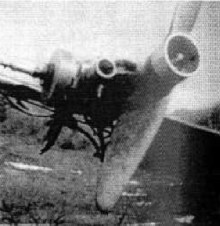
"Argus ZF-140 engine"


